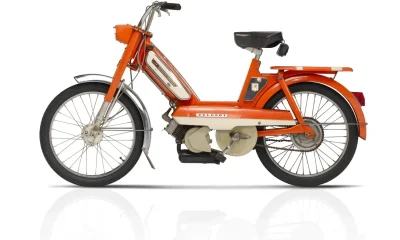Ahead of the 2025 Global Road Safety Conference, WHO and Vietnam hosted leaders from 12 countries to address rising motorcycle fatalities and share solutions, with a focus on child passenger safety and sustainable road policies.

As the world prepares for the Global Ministerial Conference on Road Safety in early 2025, the streets of Ha Noi have become a hub for international collaboration and practical dialogue. In November 2024, Vietnam and the World Health Organisation (WHO) co-hosted a significant summit that brought together more than 120 road safety leaders and experts from 12 countries. This was more than just another meeting. It was a wake-up call.
The numbers are alarming. Powered two- and three-wheelers now account for nearly one-third of the 1.2 million annual road deaths worldwide. Since 2011, the global motorcycle population has nearly tripled, with some WHO regions recording even sharper increases. Yet the development of safety regulations, road infrastructure, and public education has not kept pace with the growth.
Vietnam as a case study
Few nations illustrate the global motorcycle trend as vividly as Vietnam. With an estimated 74 million motorcycles—more than its adult population—motorbikes are central to daily life. They make up over 90 per cent of the country’s vehicles and are involved in more than 60 per cent of road crashes. Despite this, Vietnam has managed to reduce road traffic fatalities by more than 40 per cent between 2010 and 2021. This achievement places the country in a unique position to lead conversations on practical, scalable solutions.
Dr Angela Pratt, WHO Representative to Viet Nam, acknowledged the progress while emphasising the need for continued action. Vietnam’s reforms in legislation, infrastructure, and education have yielded results, but she noted that significant work remains to be done.
Global cooperation on two-wheeled safety
The Ha Noi conference, titled the International Conference on Motorcycle Traffic Safety: Challenges and Lessons Learned, highlighted the importance of shared learning across borders. Many developing nations in South Asia, Africa, and Latin America are experiencing similar increases in motorcycle use and are facing rising injury and death rates. Speakers at the event focused on the need for more sustainable, inclusive, and evidence-based safety policies.
One key area of concern was the safety of children riding as passengers. WHO has identified this as a global priority and is exploring innovations such as safety straps and child seats for motorbikes and e-bikes. A new study by WHO and the Chinese Centre for Disease Control and Prevention will examine the safety of child passengers on electric bikes in Shanghai, with findings expected to inform broader international policy.
Dr Nhan Tran, Head of Safety and Mobility at WHO, emphasised that collaborative action is essential. With the rapid increase in motorcycle usage, countries must come together to strengthen laws, improve road design, and invest in public awareness campaigns.
Looking ahead to 2025
This workshop marks an important step toward the Global Ministerial Conference on Road Safety scheduled for February 2025. WHO is working to ensure that the conference produces clear strategies to reduce motorcycle-related deaths, particularly in regions where motorcycles are the primary form of transport.
Dr Khuat Viet Hung, President of Viet Nam’s Transport Development and Strategy Institute, expressed confidence that the work done in Viet Nam can support other nations. By creating safety frameworks that are both effective and adaptable, countries can better protect millions of riders around the world.
This moment is not just about policy but about people. In a world where motorcycles offer freedom, mobility, and access, safety must become part of the ride. Vietnam is showing what is possible, and now the world is watching.































Facebook
Instagram
X (Twitter)
YouTube
LinkedIn
RSS